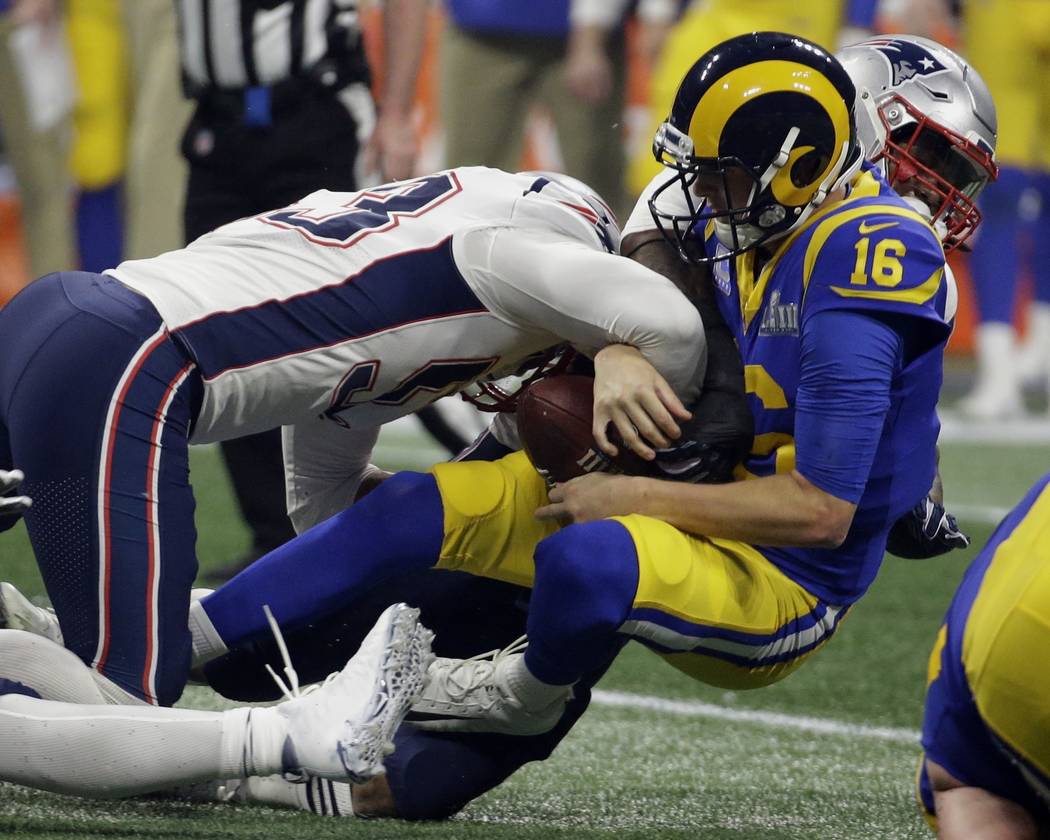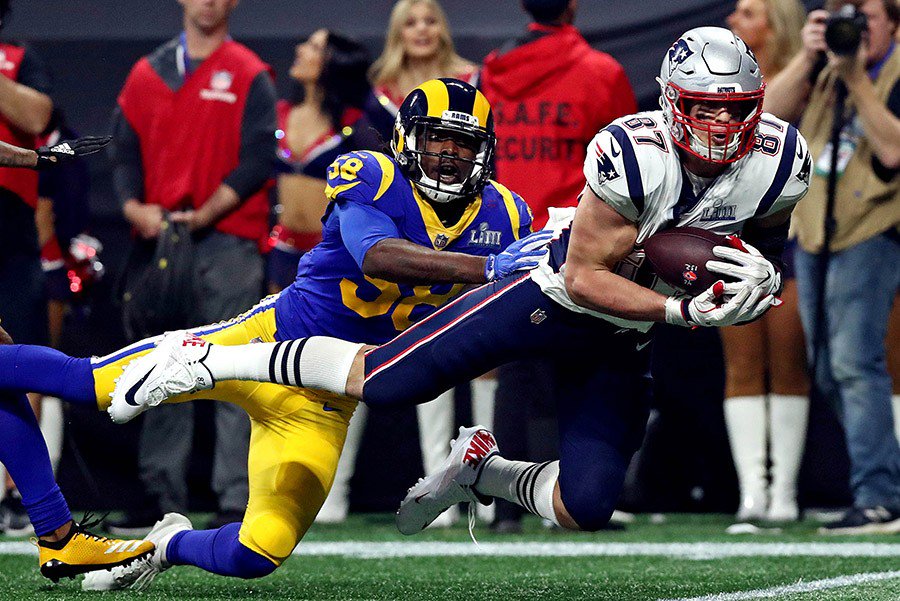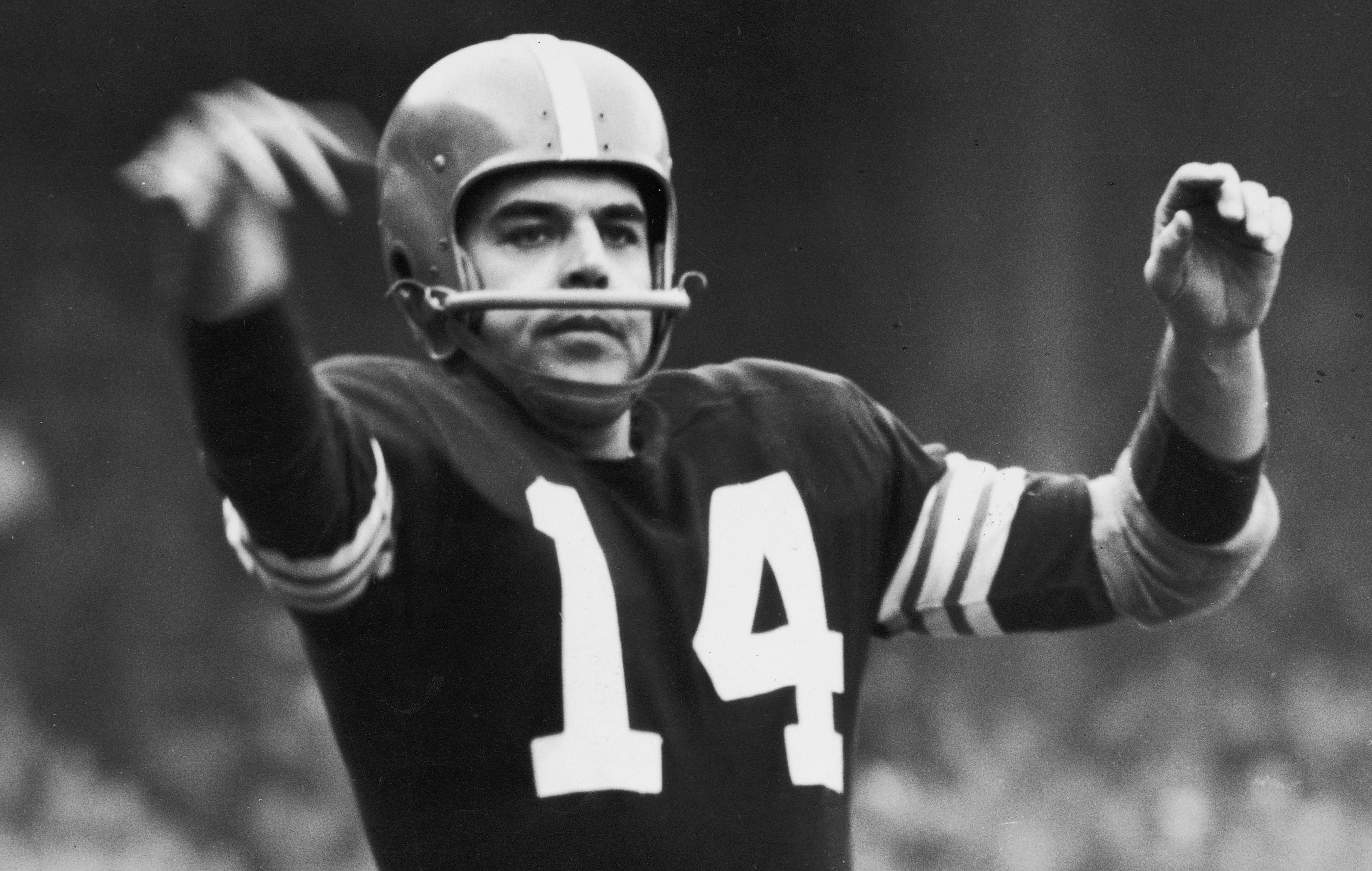Happy Friday

Not that everyone remembers Joe Friday from Dragnet. But he often wasn’t the most emotional or cherry sort of guy.
One man Who's Got Something to Say About That

Not that everyone remembers Joe Friday from Dragnet. But he often wasn’t the most emotional or cherry sort of guy.
I can understand why viewers did not find the game entertaining. It was almost as tense and frustrating for us as it was for the players, as the defenses kept blowing out the match before the offenses could light the fireworks.
While today’s casual viewers wanted to see high-scoring offenses do their thing, in the scheme of NFL history it was the defenses that made this game memorable, even legendary.

The winning defense put on the most dominating performance since Super Bowl III, played 50 years ago.
But there are significant differences. Sunday’s teams were pretty much even when it came to professional experts picking the winner. After blowouts in the first two Super Bowls, nobody picked the NY Jets from the upstart AFL to upset the NFL’s Baltimore Colts, which earlier that season were being called the Greatest Team in NFL History.
But the Jets victory was not nearly as impressive as the Patriots’, because several of their opponents were playing with significant injuries, and they were facing a backup quarterback. The Colt’s only points came late in the game when hobbled John Unitas came off the bench in a last-ditch effort at a comeback.

The Rams had the second highest scoring offense in the league this season, with all their stars but one in good shape yesterday. The Patriots shut them out in the first half, with but two First Downs, and held them to 3 points total.
The victory was achieved in the boring and forgettable trenches, where continual penetration from New England’s front seven allowed no time for the Rams’ complicated trickery to unfold, forcing LA to resort to traditional plays.
It’s not that the Rams “didn’t show up.” The Patriots took the Ram’s usual game plan away from them.
LA’s defense was almost as impressive as New England’s, until the end. That’s when the boring and forgettable preseason conditioning paid off yet again for the Patriots.
Their defense had just a little more gas left in the tank, and their offensive line gave their quarterback the time to make the key throws he couldn’t earlier in the game, and then they split open the Ram’s Fearsome Foursome like a melon for the winning touchdown run.
Finally, the Patriot’s pass rush actually got better on the Ram’s very last drive, despite the refs not calling the blatant Offensive Holding, which got worse and worse as the game went on.
The only other time both defenses were so dominant and disruptive in the same Super Bowl was Super Bowl V, which is often accused of being the worst Super Bowl, the sloppiest, etc., when it was really two ferocious defenses making two good offenses look bad.
The MVP was the middle linebacker for the losing team, the Cowboy’s Chuck Howley, even though it was the victorious Colts’ middle linebacker, Mike Curtis, whose interception set up the winning field goal.

While I can appreciate that Julian Edelman’s 10 receptions were one short of Jerry Rice’s Super Bowl record, it seems to me that there were more-valuable players on the two defenses of this particular game, with at least three playing for New England who had more to do with the Rams losing than Edelman had to do with the Patriots coming out on top.
Super Bowl LIII was like a heavyweight prize fight of two dominant defenses shutting down two famous offenses, each making the opposing star quarterbacks seem “off” or “not themselves.” On TV, we saw passes not getting to where receivers were. We didn’t see the cornerbacks and linebackers disrupting timing routes so the receivers weren’t getting to where they should have been.

And so the defenses kept blowing out the match to the fireworks – until Tom Brady’s last rocket took off on course and landed in Gronkowski’s hands, in the only little window it could have, due to the triple-coverage.

It was one of a handful of offensive plays from either side that succeeded, and it was the most important.
There will never be scripted drama quite like that. And anyone who thinks that can happen by the refs or the league “fixing” the Patriots’ victories should just keep their mouth shut so all the stupid doesn’t fall out.
And so, Tom Brady got his sixth championship victory, in eighteen seasons. He only needs one more to tie the GOAT.

Otto Graham played professional football for 10 seasons and took his team to the championship game every year, winning seven of them. This was in an era before the ball was reshaped for more accurate passing, and still he set records not touched until Joe Montana was playing with rules that gave receivers much greater advantages while running routes; not to mention the coddling of receivers that goes on in Brady’s era.
For his time, Brady is indeed amazing. But with the pro-offense rules they have these days, it is the defensive performances in this most-recent Super Bowl that make it truly incredible, even legendary.
And that’s one man’s word on…
Despite England’s obsession with the mythic King Arthur, the original legends surrounding that mysterious figure come from France. The newly uncovered fragments refer to the preparations for a battle near Trebes, by the South Riviera, where the king’s wizard Merlin and various legendary knights faced off against the forces of King Claudas. They contain details and variations different from all known versions of the Vulgate Continuation of Merlin (Suite Vulgate de Merlin,) from the larger Story of Merlin (Estoire de Merlin,) and predate any known English language telling of these tales.

Press release issued: 30 January 2019
A chance discovery, hidden away in a series of 16th-century books deep in the archive of Bristol Central Library, has revealed original manuscript fragments from the Middle Ages which tell part of the story of Merlin the magician, one of the most famous characters from Arthurian legend.
Academics from the Universities of Bristol and Durham are now analysing the seven parchment fragments which are thought to come from the Old French sequence of texts known as the Vulgate Cycle or Lancelot-Grail Cycle, dating back to the 13th century.
Parts of the Vulgate Cycle were probably used by Sir Thomas Malory (1415-1471) as a source for his Le Morte D’Arthur (published in 1485 by William Caxton) which is itself the main source text for many modern retellings of the Arthurian legend in English, but no one version known so far has proven to be exactly alike with what he appears to have used.
In addition, one of the most exciting elements of this particular find is that the Bristol fragments contain evidence of subtle, but significant, differences from the traditional narrative of the stories.
The seven hand-written parchment fragments were discovered by Michael Richardson from the University of Bristol’s Special Collections Library who was looking for materials for students studying the history of the book for the new MA in Medieval Studies.
They were found bound inside a four-volume edition of the works of the French scholar and reformer Jean Gerson (1363-1429) and, recognising a number of familiar Arthurian names, Michael contacted Dr Leah Tether, President of the International Arthurian Society (British Branch), from Bristol’s Department of English to see if the finds were in any way significant.


Apparently warm air from Morocco has made its way to the North Pole causing the upcoming vortex where a southerly Jet Stream poles super-freezing air down into temperate zones. An increase in such vortices fits well within even conservative scientific models of the effect of climate change, which is increasing faster than anyone had ever dared to fear possible.
Please bundle up and bring animals indoors. Please report any stray animals you see two authorities as the serious cold approaches.
Update Jan 31.: Chicago reached windchill of -52 below zero.
At least four locations have tied or set all-time record lows:
“Sláinte!”
The route of the Selma March is now one of the Federal Highway Administration’s America’s Byways and also a National Park Service Historic Trail that is currently closed due to the ongoing attempted Right Wing coups that has shut down the Federal Government.
My distortion, overdrive, delay, chorus were all dialed in and the stack was warm and smoking. Then came that moment when you can tell they have turned it up in the house. The bass was still being fiddled with for the onstage mix, but we were seconds away from being introduced and kicking off the opening number, when I struck a growling chord on my Les Paul that made the front rows snap wake. And that was when the acoustic guitar licks went off on my phone. What a time for a call!
And then it was like in Cosmos or Bill & Ted when I was suddenly yanked back and upward, my guitar and leather jacket dropping away as I soared through a whirring worm hole of spacetime… And before I even opened my eyes I could tell it was a bright, sunny day, and I was awake and back in my bed.
“Nooooooo! Take me baaaaack!” I moaned.
I guess it’s time to change my ringtone.